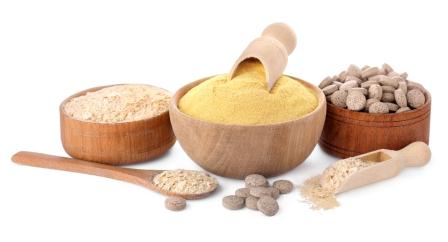
This week I take a look at how you can harvest and reuse brewing yeast from one batch to pitch it in a new batch of beer.
Reusing yeast is one of the oldest brewing techniques, as civilizations started culturing and reusing yeast for bread, beer, and wine thousands of years ago. Homebrewers have a long history of reusing yeast as well since many of us are frugal and enjoy tinkering.
Washing vs Rinsing Yeast
Though the two terms are often used interchangeably, washing and rinsing yeast are technically two separate processes. Rinsing yeast is a process of separating out the healthy yeast from the sediment left over from fermentation. This is the technique most often used at the homebrew level. Many brewers refer to this as washing the yeast, even though washing is slightly different.
Washing yeast is a process using chemicals to reduce active bacteria in the yeast slurry. Typically this is done by adding acid such as phosphoric acid to the slurry to reduce the pH to the 2.0-2.5 pH range, and holding it there for 60-90 minutes while stirring before pitching. Most home brewers do not take this extra step. Additional details on how to do it are in the AHA article here.
Harvesting and Rinsing Your Yeast
Before harvesting yeast from your current batch, you need to sanitize everything that might touch or come in contact with the yeast. Clean and sanitize your yeast container, anything used to transfer the yeast, fittings, etc…so you don’t risk contaminating your sample.
Next draw the yeast off into a sterile container. If you have a fermenter like a conical with a yeast collection port this is very simple. If you are using a bucket or carboy you want to harvest the yeast by pouring the yeast sediment or using a sterile spoon as quickly as you can after siphoning off your beer. For containers, a sterile mason’s jar is not a bad option. You want to fill the container to about 20% of capacity and then add sterile water to bring the sample up to about 85-90% volume leaving about 10% headspace.
Next shake the container for a few minutes, then let it settle for at least 20 minutes. You should see three separate layers form if you hold the container up to the light. The top layer is mostly water, and can be discarded. The middle layer has healthy yeast, and you can carefully pour it out into another sterile container. The bottom layer is mostly trub and sediment and can be discarded. If you want to concentrate the slurry, you can repeat this process separating the yeast again.
If at all possible you should reused the yeast as soon as possible. Properly harvested yeast has a concentration as high as 1 billion cells per milliliter, and an average ale might require 160 billion cells, or 160 ml of fresh yeast slurry. Obviously lagers require twice that but you can use a pitch rate calculator to estimate how much is needed. When measuring out your slurry, only count the thick layer at the bottom, as again the light fluid at the top is mostly water. Overpitching by a bit is never a bad thing, and you can also create a yeast starter if you want to rouse a slightly older slurry sample.
While you should store slurry in the refrigerator, its best to use it within a few days if possible. While the slurry can be stored as long as a few months it does lose viability quickly so I would recommend using a yeast starter with any slurry that has been stored more than a week or so.
I hope you enjoyed this week’s article on reusing yeast. Thanks for joining me on the BeerSmith Home Brewing Blog. If you want to take the guesswork out of brewing, please try my BeerSmith recipe software from BeerSmith.com. Be sure to sign up for my newsletter or my podcast (also on itunes and youtube) for more great tips on homebrewing.
